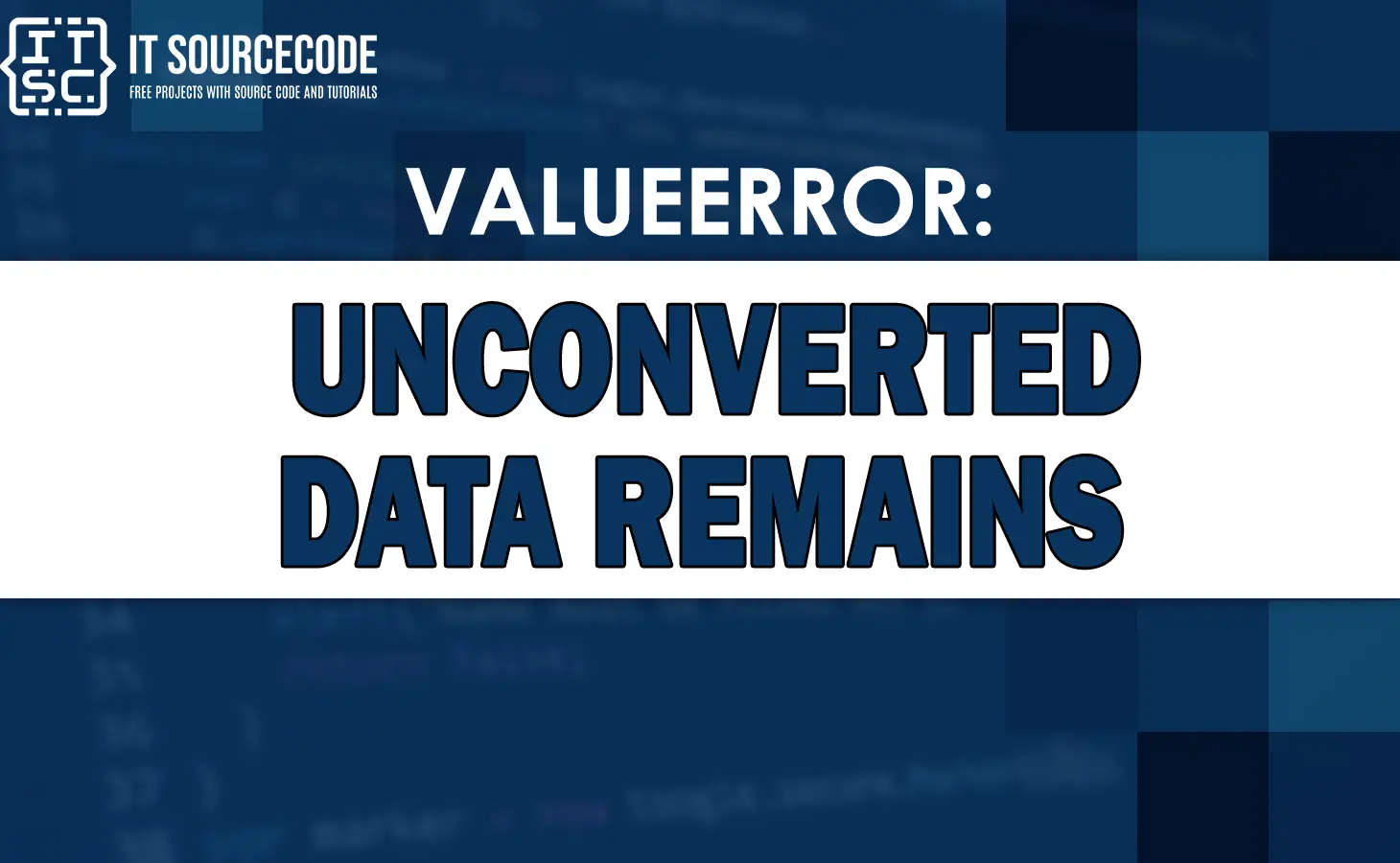Are you encountering the ValueError: unconverted data remains error in your Python code? Don’t worry, you’ve come to the right place!
In this article, we will explain in detail this common error and provide you with examples and solutions to help you resolve it.
What is the ValueError: unconverted data remains error?
When working with dates and times in Python, you may encounter the ValueError: unconverted data remains error.
This error typically occurs when there are leftover characters in the input string after parsing a date or time using the strptime() method from the datetime module.
Let’s take a look at some examples and solutions to understand this error better.
Examples and Solutions in ValueError: unconverted data remains
Example 1: Incorrectly formatted date string
from datetime import datetime
date_string = "2023-05-31 10:00:00"
format_string = "%Y-%m-%d"
try:
date = datetime.strptime(date_string, format_string)
print("Parsed date:", date)
except ValueError as e:
print("Valueerror:", e)
In this example, the datetime.strptime() function is used to parse the date_string using the specified format_string.
However, the date_string is not formatted correctly according to the given format.
The output of the code will be:
Valueerror: unconverted data remains
The error message indicates that there is remaining data in the date_string that was not successfully converted based on the format provided.
In this case, the time component “10:00:00” is not accounted for in the format.
Solution
To resolve this error, you can update the format_string to include the time component if necessary or remove the time component from the date_string if it’s not needed.
Here’s an updated code that removes the time component from the date_string:
from datetime import datetime
date_string = "2021-05-31"
format_string = "%Y-%m-%d"
try:
date = datetime.strptime(date_string, format_string)
print("Parsed date:", date)
except ValueError as e:
print("Error:", e)
Now, the output will be:
Parsed date: 2021-05-31 00:00:00
The updated code successfully parses the date string without any remaining unconverted data, and the parsed date is printed.
Example 2: Trailing characters in the input string
from datetime import datetime
date_string = "2023-05-15 10:30:00-05:00 extra"
date_object = datetime.strptime(date_string, "%Y-%m-%d %H:%M:%S%z")
In this example, the date_string contains additional characters after the timezone offset (“-05:00“).
As a result, the ValueError: unconverted data remains error is raised because the strptime() method expects the input string to be fully converted into a datetime object.
Solution 2: Trim the input string
To resolve this error, we need to remove the trailing characters from the input string before parsing it.
We can use the split() method to separate the relevant portion of the string and then pass it to the strptime() method.
Here’s the updated code:
from datetime import datetime
date_string = "2022-05-15 10:30:00-05:00 extra"
date_string = date_string.split()[0]
date_object = datetime.strptime(date_string, "%Y-%m-%d %H:%M:%S%z")
By extracting only the necessary part of the string, we eliminate the trailing characters and avoid the ValueError.
FAQs
The ValueError: unconverted data remains error occurs when there are leftover characters in the input string after parsing a date or time using the strptime() method from the datetime module.
This usually happens when the format string does not match the input string, or when there are trailing characters in the input string.
To fix this error, you can adjust the format string to match the input string correctly. Make sure to include the necessary format specifiers for elements like the AM/PM indicator or the timezone offset.
Yes, there are several third-party libraries available that provide easier and more flexible date and time parsing in Python. Some popular options include dateutil, pendulum, and arrow.
Conclusion
The ValueError unconverted data remains error in Python can be encountered when working with dates and times.
By understanding the examples and solutions provided in this article, you can resolve this error and parse date and time strings correctly in your Python code.

